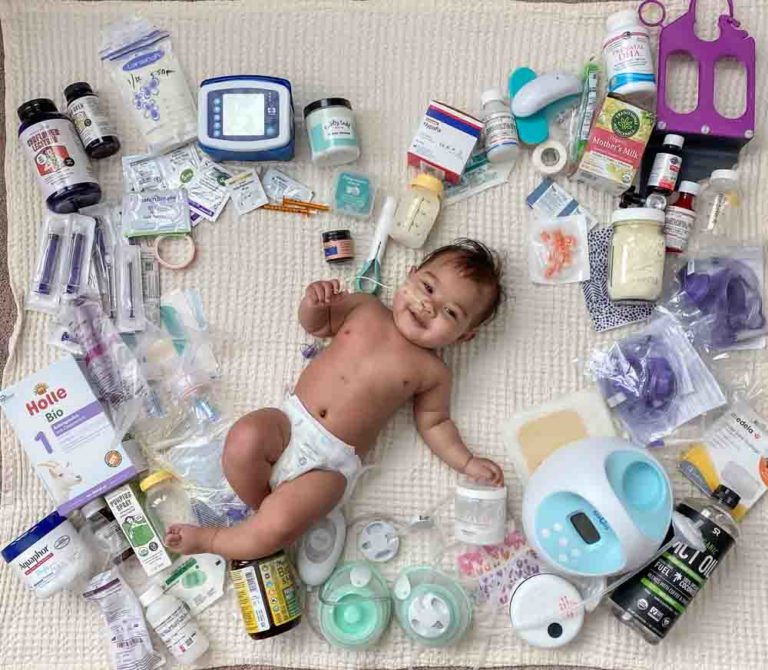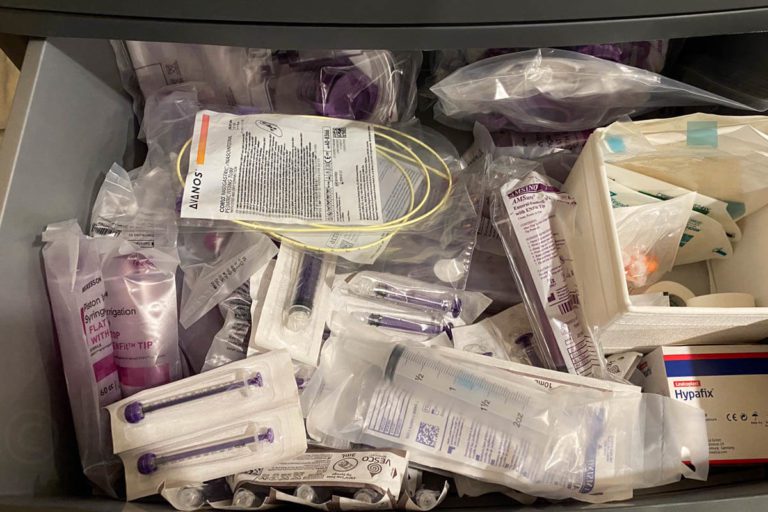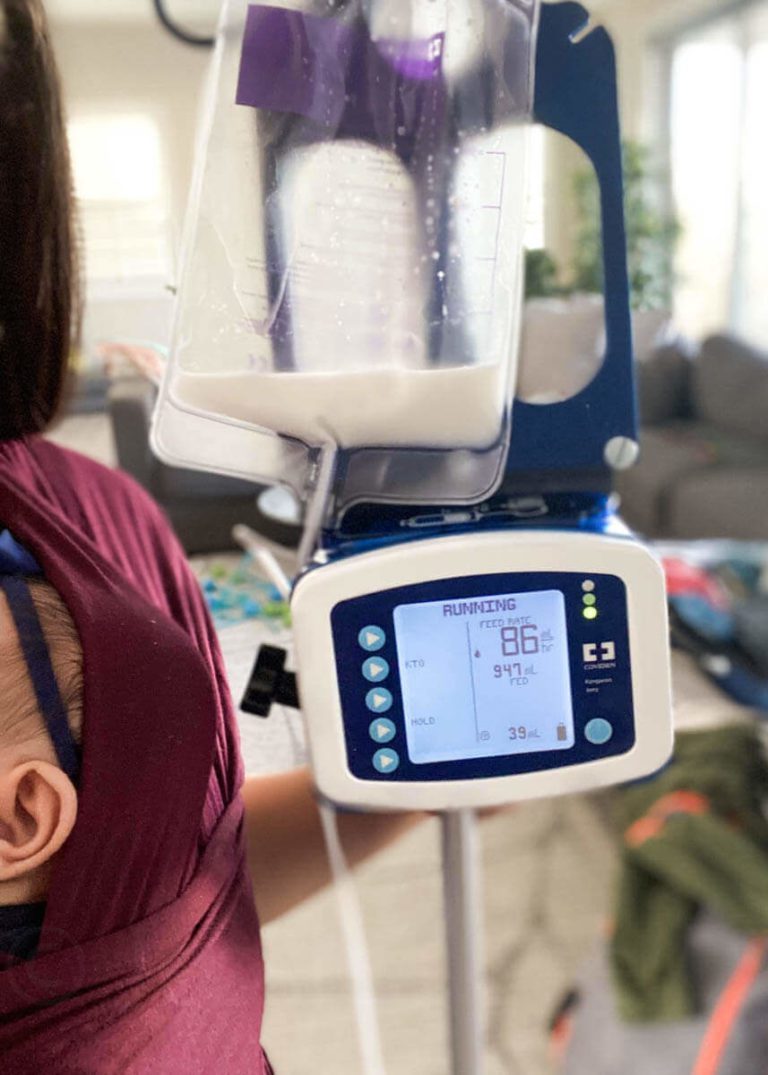NG Tube Woes: How to Clear a Clogged Feeding Tube for Your Baby
NG tubes – love ‘em or hate ‘em – sometimes they are essential for a baby. If you have an NG tubie baby, you likely have or soon will run into a clogged tube. They are thin so it is not uncommon for the tube to clog on occasion. You can clear a clogged feeding tube with different pulling and pushing techniques with a syringe, and by using water and even soda. Understanding how to clear a clogged feeding tube is an essential tool to have in your tubie toolkit!
Due to my daughter’s complex Congenital Heart Defects (CHD) and additional complicating factors, she primarily fed through an NG tube for more than half of her first year. The children’s hospital provided thorough training on managing tube feeding at home, including tube placement, taping, feeding procedures, and troubleshooting. I became adept at all things NG tube over those 8 months.
For one of her medications, I had to split it, crush it, and mix it with water. Making sure it was broken down and mixed well enough to not clog the tube was important, but inevitably sometimes that happened.For another medication, I had to mix it with water right before giving it to her. You were supposed to wait for a short bit so it could thicken, but I couldn’t wait too long or it would be too thick to push through her NG tube. Unsurprisingly, these two meds gave me the most trouble, and dealing with a clogged NG tube became a familiar affair.

Understanding NG Tube Clogs
Nasogastric tubes vary in diameter and length, but regardless, relatively they are all thin, long tubes. It’s easy for something to get stuck in them. All contents passing through must be in liquid form to navigate the tube’s narrow passages.
Babies may receive breastmilk, formula, water, medication, and other liquid nutrition through an NG tube. Depending on the exact content, your baby’s tube may be more or less likely to clog. Factors such as temperature and thickness of the contents influence the likelihood of a clog.
If your baby regularly feeds with their tube, you should quickly notice a clog. You can tell if an NG tube is clogged when you (or their pump) are unable to push their food or medicine through the tube. You’ll experience strong resistance.
Promptly addressing a clogged feeding tube is important to ensure your baby can continue to receive essential nutrition and medication. Delaying can exacerbate the issue, making it more challenging to clear and potentially necessitating tube replacement. Minimizing the frequency of tube replacements is important for your baby’s comfort.
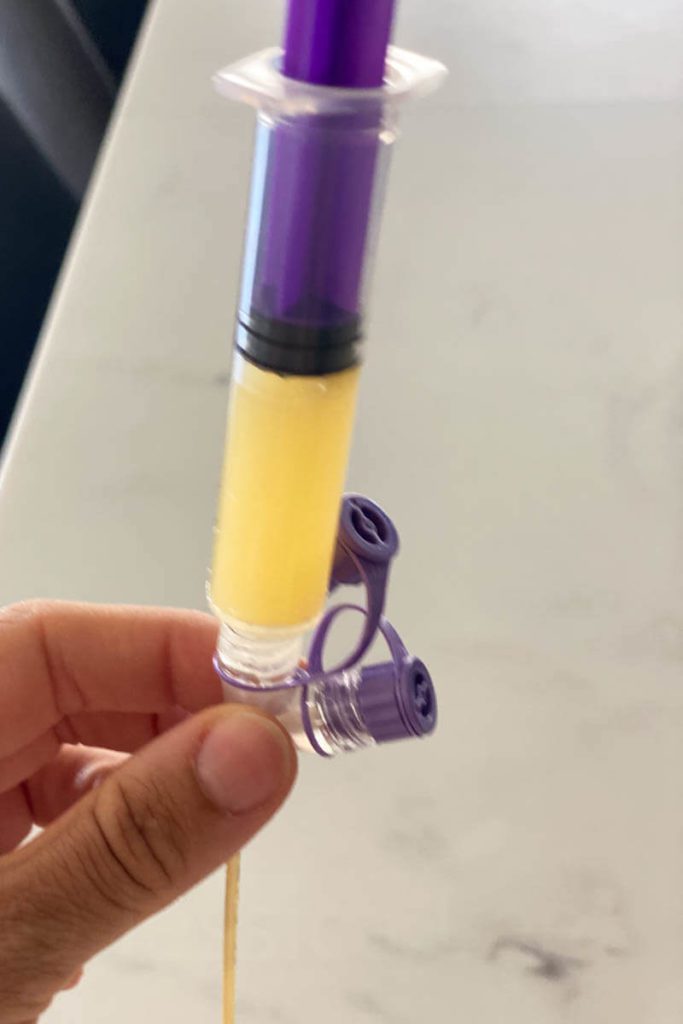
Preventive Measures to Minimize Tube Clogging
The best way to clear a clogged NG tube is to not have to clog at all! If only that were realistic, but unfortunately, if your baby is at home with an NG tube for the foreseeable future, you will likely have to deal with a clog at some point. You can accept and prepare yourself for dealing with a clogged NG tube and also try to adopt some preventative measures to help minimize the chance of their tube clogging.
A simple yet effective preventative measure is flushing your baby’s NG tube with water after feeds and medications. Residual milk and medications increase the risk of clogs. Ensuring the tube is clear of contents and only has water sitting in it reduces the likelihood of blockages.
If your little one has a medication that thickens or other nutrition with a thickening agent, you will have to pay close attention to the timing and degree of thickness that passes easily through the tube or not. Realistically, this will take some trial and error. Consult their doctor or nutritionist about whether there are alternative options if you are experiencing persistent clogging issues.
Another consideration is whether their current NG tube is the best size for their nutrition needs. Tube size usually correlates to a patient’s age, but some other factors could necessitate a different tube size.
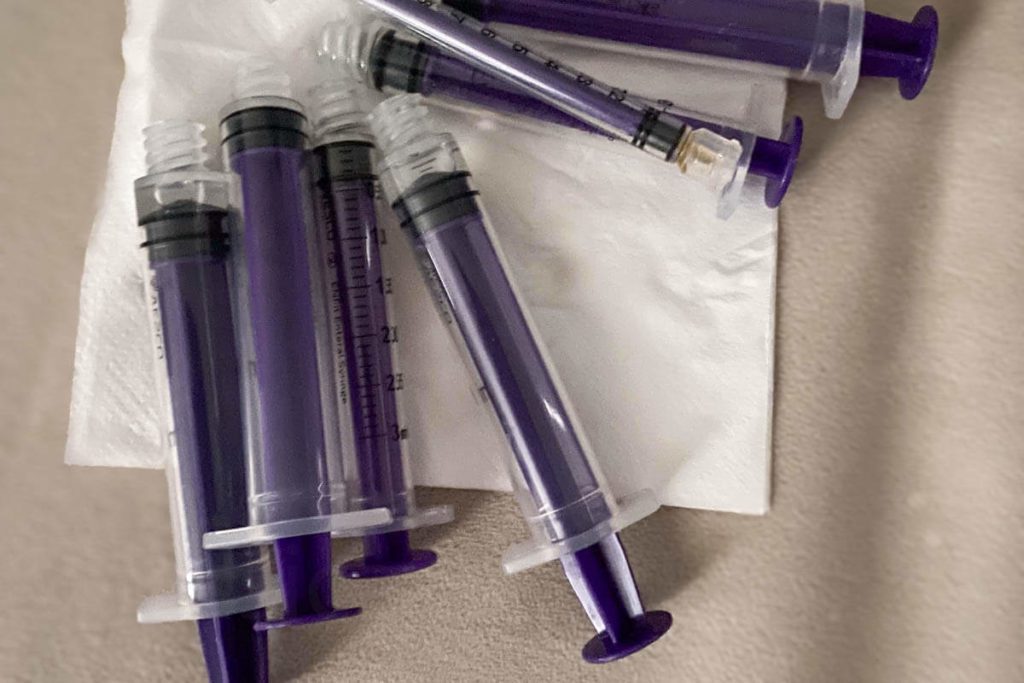
5 Ways to Clear a Clogged Feeding Tube
Now you’re faced with a clogged NG tube, what do you do? First, breathe. I remember several moments of panic when my daughter’s tube would clog. It’s not ideal, but it’s also okay.
Try to take a deep breath and proceed with a calmer head on your shoulders. Operating from a place of panic doesn’t usually help any situation (I know, this is not always easy).
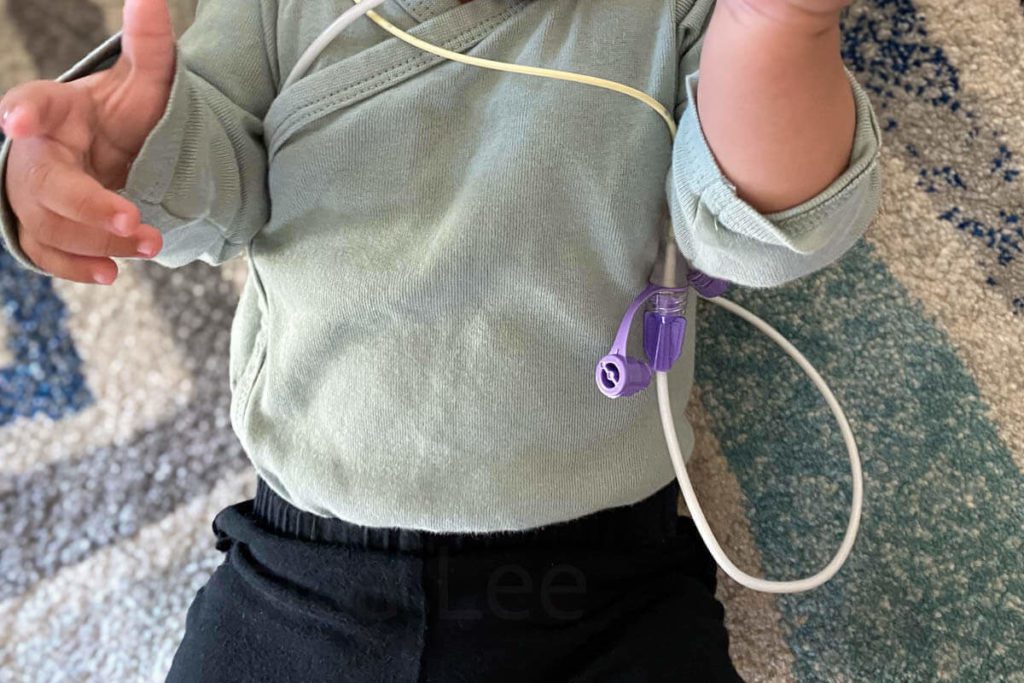
1. Check for Kinks
I’m embarrassed to have to put this one on here. But I’d be lying if I didn’t admit that I thought my daughter’s tube was clogged more than once when in reality, it just had a kink in it. In my defense, the sleep deprivation was excessive during this phase.
So, first things first, start with basics and make sure the tube has no kinks or bends in it, or that it isn’t being compressed by something, that are preventing you from advancing their feed or medicine.
2. Pull Back
After you confirm there are no kinks, proceed with addressing the clog by using a clean, empty feeding tube syringe. Attach the syringe to your baby’s tube. Try to pull back. If there’s a clog, you will be met with atypical resistance.
Keep trying to pull back. You want to use some strength, but nothing excessive so you don’t split the feeding tube. If you’re able to pull back the syringe plunger at all, then push it back in. Back and forth, out and in, and see if you’re able to use the negative pressure to force the clog out. If you’re unable to pull back on the syringe at all, then try the next option.
3. Flush with Water
Fill a clean feeding tube syringe with water – ideally warm to hot. Make sure it’s not too hot, but warmer rather than cooler has a greater ability to break down a clog.
Try to pulse the water through the tube with the syringe. You’re likely still dealing with resistance but try to push it as best you can (once again, not excessively). You can try to push in, pull back, push in again, rinse, and repeat. Pulling back adds negative pressure which can sometimes help move things along.
As you work the water, try to place your baby on their side and then roll to the other side. The movement and repositioning may help.
4. Massage the Tube
It’s difficult to know exactly where the clog is located. However, it’s worth trying to massage the external length of the NG tube. Use a few fingers and gently press, squeeze, and roll the tube in different sections. Massaging the tube could help break up the clog.
5. Push the Soda
If you’ve made it this far, then you must be dealing with an extra stubborn clog. I’m sorry, it’s not fun. I know, I’ve been there. But you can do this and it will be okay.
Confession time. I fed my 6-month-old baby soda. Yes, it’s true! The blasphemy, but I was left with no options. Though it’s not quite like most people would imagine. I didn’t give it to her in a bottle or sippy cup. She didn’t sneak a taste from an adult’s glass. No, I intentionally grabbed it from the pantry and pushed it through her feeding tube right into her stomach. I was hesitant to try it, but sometimes desperate times call for desperate measures.
Soda is powerful in unclogging a feeding tube. The carbonation and pressure can aid in breaking down the hardened contents allowing them to pass through the tube and clear the clog. Specifically, Coca-Cola is known to work best, but other sodas may work as well.
Try the same pulsing, pushing in, and pulling back technique previously discussed. If you’re at this step, you have a tough clog. Depending on where it is in the tube, you may not be able to push much through. However, the goal is to get at least some soda in the tube. You should then close it, and wait about 10-15 minutes to allow the carbonation some time to work its magic on the clog.
Get gravity on your side! Elevate the end of the tube for additional assistance.
After waiting a bit, try to flush the tube again with water and hopefully, it will pass indicating the clog has cleared.
If nothing works and the tube is still clogged
Unfortunately, sometimes no tool, technique, or liquid is strong enough to go against the most stubborn tube clogs. In this circumstance, you will have to remove your baby’s existing NG tube and replace it with a new NG tube. If you are trained to do this at home, proceed how you were trained so you can resume your baby’s feeds and medication schedule.
If you have to go to the hospital to have it replaced, maybe they will have some magic hat trick to unclog the tube. But if you tried everything on this list already, they will likely have to proceed with dropping a new tube.
Breathe and Pulse
Managing a medical baby’s NG tube is not easy. Clogs are an unfortunate reality you likely will have to deal with if you are tube feeding at home.
Remember clogs happen, it doesn’t mean you did something wrong. I’ve personally dealt with a bunch of clogs, some I was able to clear with these techniques, and others I couldn’t. Don’t stress or feel ashamed if it happens to your baby’s tube. Pause, take a breath, and pulse the syringe.
Save this post in your tubie toolkit to remember how to clear a clogged feeding tube.



